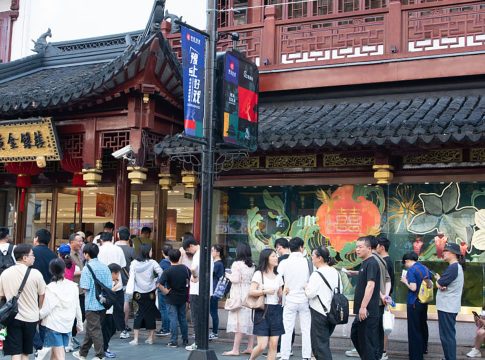Strong Retail Sales Signal Recovery in China
In a surprising turn of events, Shanghai’s Yu Garden came alive as eager shoppers formed long lines outside jewelry stores, spurred by a city initiative offering consumption vouchers. This surge in consumer activity hints at a broader recovery in China’s economy, particularly in the retail sector.
Retail Growth Outshines Expectations
According to the National Bureau of Statistics, retail sales in May saw a whopping 6.4% increase compared to the same time last year. This figure comfortably surpassed analyst expectations, who had predicted only 5% growth. It’s worth noting that this growth represents the fastest pace since late 2023 and stands in contrast to the previous month’s 5.1% growth.
What’s behind this unexpected spike? Industry experts, including Zhiwei Zhang from Pinpoint Asset Management, believe it is partially due to the ongoing effects of a consumer goods trade-in program. However, it’s important to stay cautious; declining property prices may still dampen overall consumer sentiment moving forward.
Industrial Output Slows Down
While retail sales are thriving, other sectors tell a different story. Industrial output growth slowed to 5.8% in May, down from 6.1% in April. This figure also fell short of analysts’ expectations for a 5.9% rise. Fixed-asset investment also lagged, rising just 3.7% year-to-date—lower than the anticipated 3.9%.
Moreover, the property sector continues to struggle, with investment in this area plunging by 10.7% in the first five months of the year. These challenges underline the precarious balance the Chinese economy is currently navigating.
Exports: A Mixed Bag
Exports showed some resilience, with a notable surge in shipments to Southeast Asian countries and Africa. However, exports to the United States took a significant hit, plummeting over 34%—the steepest decline since February 2020. Despite these challenges, trade data suggests that Chinese exports continue to hold up against adverse conditions.
Interestingly, a recent tariff agreement between Beijing and Washington provides some temporary relief, allowing businesses to optimize shipments and explore alternative markets. Nevertheless, the broad picture shows sluggish domestic demand remains a central concern, with consumer prices dropping for four consecutive months.
Economic Outlook: Cautious Optimism
As the economy adjusts, the Chinese government may feel less pressure to implement significant easing measures. Goldman Sachs reports that while exports are more resilient than expected, domestic demand needs monitoring. In the first half of this year, GDP growth is projected to exceed 5%, providing a glimmer of hope amid rising economic challenges.
Takeaway for Consumers
For average consumers, these developments mean it’s a crucial time to revisit financial strategies. Keep an eye on market trends, adjust budgets according to changing consumer prices, and consider making purchases during sales events. By staying informed, you can navigate the evolving economic landscape and make smarter financial choices for your household.
In conclusion, while the retail sector’s recent surge is encouraging, it’s essential to remain aware of broader economic signals and trends that could affect your financial well-being in the months to come.

Writes about personal finance, side hustles, gadgets, and tech innovation.
Bio: Priya specializes in making complex financial and tech topics easy to digest, with experience in fintech and consumer reviews.

